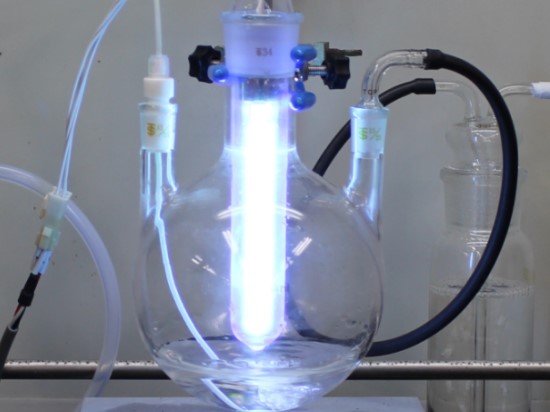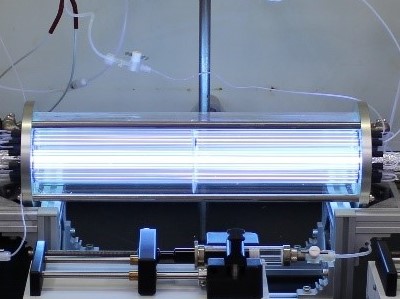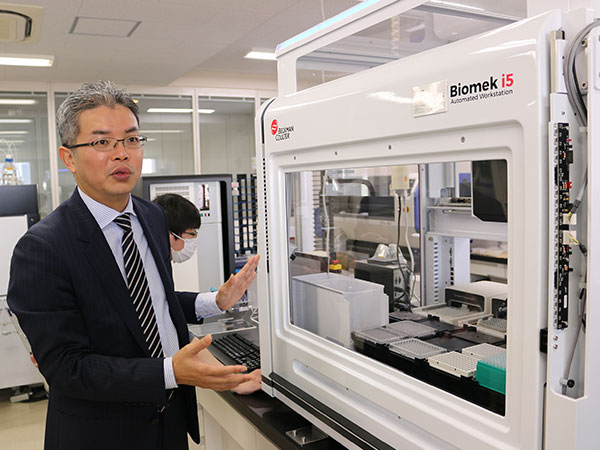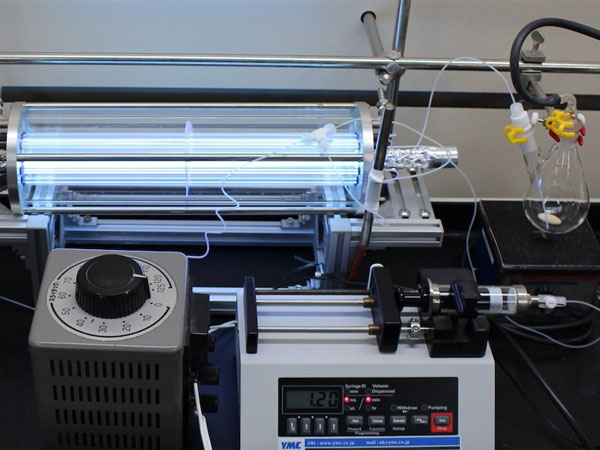Transforming transport with the Physical Internet

90% of the trade cargo travelling around the world is transported by sea, and in Japan, which is surrounded by the sea on all sides, it accounts for almost 100% of the total. HIRATA Enna, an Associate Professor at the Faculty of Oceanology at Kobe University, has been working at the global maritime giant "A.P. Moller-Maersk" (headquartered in Denmark) for a long time, and during her tenure there was involved in a range of different projects. Based on this rich practical experience, her current research aims for DX (Digital Transformation) in the logistics industry, that is, the reform and evolution of the trade through the use of digital technology.
"The shipping industry is still based on paper documents, so there are still many inefficient operations. By digitizing documents and procedures on a platform that uses blockchain technology, it would be possible to easily track the current location of cargo being shipped from overseas and issue and submit import/export certificates in a short period of time. When I was at Maersk, I was involved in a blockchain platform that digitally managed the supply chain (the entire process from procurement of raw materials and parts, to manufacturing, inventory management, distribution, and sales) with IBM, and was in charge of coordinating Asia. Unfortunately, it didn’t gain enough traction and was discontinued after a few years," says Hirata.
What she felt while working at the forefront of global logistics was the lack of awareness of DX in the industry as a whole, and the importance of developing human resources who can lead future changes. So she decided to switch to a research position where she could define problems, propose solutions, and nurture people on her own.
What she is most focused on now is the "Physical Internet (PI)". In a nutshell, it is a concept to apply the principles of the internet to physical logistics to improve the efficiency of transportation routes. It is especially attracting attention as a measure to solve various problems in the domestic land transportation industry.
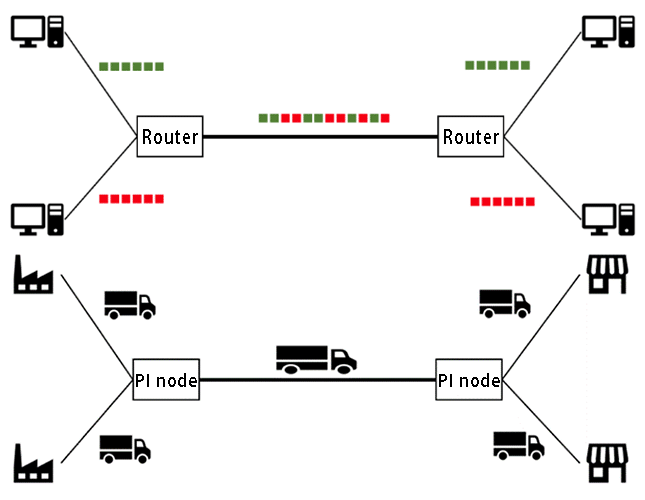
Hirata explains: "Currently, the average cargo loading rate of trucks running in Japan is only 40%. This is believed to be caused by the spread of online shopping and the increase in individual delivery demand. Conventional business-to-business transactions focus on large-lot freight, but when it comes to individual purchases, packages are smaller and deliveries are more frequent. As a consequence, many trucks are not fully loaded and run around more frequently. This situation was exacerbated when more people stayed at home during the COVID-19 pandemic."
PI is the solution to this problem. By creating cargo consolidation hubs (called nodes) and conducting joint transport, it becomes possible to have one-to-many interactions like on the internet. "This idea can significantly reduce the number of trucks and the delivery frequency compared to the current state, where sender and receiver of the cargo basically interact one-on-one," the Kobe University researcher says. Furthermore, by standardizing different sizes of PI containers, it is possible to not only improve transport efficiency, but also reduce the environmental impact by reusing packaging materials.
Government agencies such as the Ministry of Economy, Trade and Industry are also promoting the initiative, and joint transport is already being carried out in some parts of Japan at the local level. She says that her future goal is to expand this method to shipping and other forms of trade, and to develop it on a global scale.
Tackling the decarbonization of the sea from multiple fields
Hirata’s ideas for reform of the logistics system are not only aimed at rationalizing and improving the efficiency of the industry. Beyond that, she has set her mind on solving global problems in line with the SDGs.
One of them is, of course, reducing environmental impact. By making truck transport more efficient and reducing the number and frequency of deliveries, CO2 emissions can be reduced. Since automobiles by far emit the largest amount of CO2 per transportation volume, the effect is not small.
Another is to improve and enhance the working environment and increase job satisfaction and productivity of each individual. The so-called "logistics problem of 2024" makes this a particularly pertinent in Japan’s land transportation industry.
"The problem of 2024 is that from April of that year, the overtime hours of truck drivers will be legally limited to 960 hours per year, or 80 hours per month, and as a consequence, it will be impossible to secure the necessary transport capacity. Even now, there is a shortage of manpower and it can only be overcome by overtime work. This shortage will only become more severe. How to deal with this has become a major challenge for the industry. DX and PI have the potential to solve this problem as well as free people from long hours of work and grueling and dangerous jobs," Hirata explains.
Similarly, many benefits can be expected from system reform in the maritime industry, such as the "decarbonization of the sea", that is the reduction of CO2 emissions from ships.
Hirota says: "Ships have a data system called "AIS" (Automatic Identification System), which allows us to know such things as departure and arrival points, location information, etc. Using this, we can measure and predict the CO2 emissions of ships in operation. To tackle this, a "carbon neutral ship" that can recover and reuse the CO2 emitted to the sea surface has been developed. I myself specialize in business administration, data analysis, AI technology, etc., and I am not directly involved in ship development, but decarbonizing the sea is something that can be approached from many academic fields and should be worked on in collaboration with each other."
To do so, the Faculty of Oceanology will establish a new course for fourth-year students to learn about the "decarbonization of the sea" starting in the academic year 2024.
Researchers from various fields, including Hirata, will offer lectures covering climate change, alternative fuels, carbon capture in the seabed, trends in the maritime industry, as well as initiatives by international organizations and the Japanese government. In addition, the classes will have a big focus on practical applications, too.
"The Faculty of Oceanology recruits both science and humanities students, and students who enroll in the program will be able to study in integration of these fields. Science students can learn management and legal perspectives, and humanities students can gain knowledge in engineering and technology. I want to make it a course that takes advantage of the benefits of this faculty."
Resume
Dr. Hirata completed her Ph.D. at the Graduate School of Business Administration, Kobe University, in 2016. After working at Marubeni and A. P. Moller-Maersk Group, the Center for Mathematical and Data Sciences at Kobe University in 2019. Subsequently, in April 2022, she assumed her current role as Associate Professor at the Graduate School of Maritime Sciences, Kobe University. Dr. Hirata is actively involved in training data scientists and conducting research that combines economic and management theories in transportation with data science methodologies. She is the author of the books "e-Shipping: Digitization in International Shipping Business", "Introduction to Data Science" (co-author), and "Introduction to International Transport and Logistics" (co-author). Some of her recent publications include "Blockchain technology in supply chain management: insights from machine learning algorithms" (winner of the Emerald Literati Awards 2022 Outstanding Paper) and "Uncovering the impact of COVID-19 on shipping and logistics" (winner of the Emerald Literati Awards 2023 Outstanding Paper).






